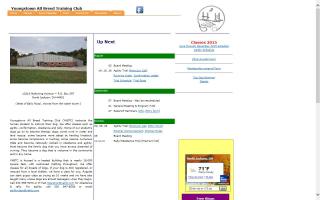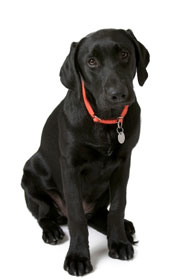Dog & Puppy Training
Historically, domesticated dogs were trained to perform a variety of tasks including retrieving, herding, pulling sleds, and warding off intruders. Today, dogs are also trained for racing, entertaining, and assisting people with disabilities. Activity training is used to teach more specific skills like these, while behavioral and obedience training is what you as a dog owner will use to encourage house training, leash walking, good social behavior, and obedience to commands.
Behavioral and obedience training works best when it is started at an early age and is consistently reinforced. Training should begin as soon your puppy is weaned and continue for the first eighteen months of life. Your dog must be taught where to relieve himself and how to properly socialize with people and other dogs. He can also be trained to obey simple commands to come, sit, and stay, as well as to walk on a leash properly. In addition to teaching correct behavior and assuring the safety of your pet and others, proper training establishes your dog's position in the hierarchy of the family.
Dogs instinctively behave as members of a pack and need to understand their position in order for training to be effective. Your dog's family is his pack, and you, as the owner, should always be seen as the dominant partner or "top dog". To help establish this dominance, you should feed him at a time that suits you, perhaps after you yourself have eaten. Never feed him near the table where you eat or share your food with him. Don't let your dog always win at games such as tug. Do not let your dog stand over you or otherwise assume a position of dominance. Play with your dog consistently but ignore him when he is being very demanding. Do not let him sit on the furniture. Occasionally sit in his bed. Try to go through doors and hallways ahead of your dog without letting him run ahead of you. Dogs find reassurance in knowing their place in the pack and consistent training will bring them comfort and lessen confusion.
Keep training sessions relatively short, around ten to fifteen minutes, and choose a quiet area away from distractions. Be firm in your tone of voice. Simple one word commands such as "Sit!" or "Down!" are much easier to learn than "Sit down!" or "Lie down!". Good behavior should be rewarded frequently and lavishly. Use verbal praise for behavioral training, but treats can be used when training for obedience. Hitting can induce fear-related aggression and undermine your pet's trust in you and should never be used as a form of punishment. When discipline is needed, a spray bottle filled with water can be used to immediately spray your dog when he misbehaves. Make sure trust is established by positive reinforcement of correct behavior and continue to practice, practice, practice.
Training is an integral part of responsible pet ownership and one of the most important things you can do to foster a secure and happy dog. Basic obedience classes can be located in our directory below or through your veterinarian, breed associations, or the newspaper; they are extremely helpful for first time dog owners as well as owners of strong-willed dogs. Training your dog with kindness, firmness, and consistency will create a loving bond with your dog and ensure that he is a loyal member of your family.
Obedience Classes Directory - Page 4
Categories > Services > Obedience Classes
Regions
- North America (5/0/82)
- Oceania (2/0/0)
- South America (6/0/0)
- United States (50/0/76)



 Visit Camp Bow Wow - Temecula's Facebook Page
Visit Camp Bow Wow - Temecula's Facebook Page

